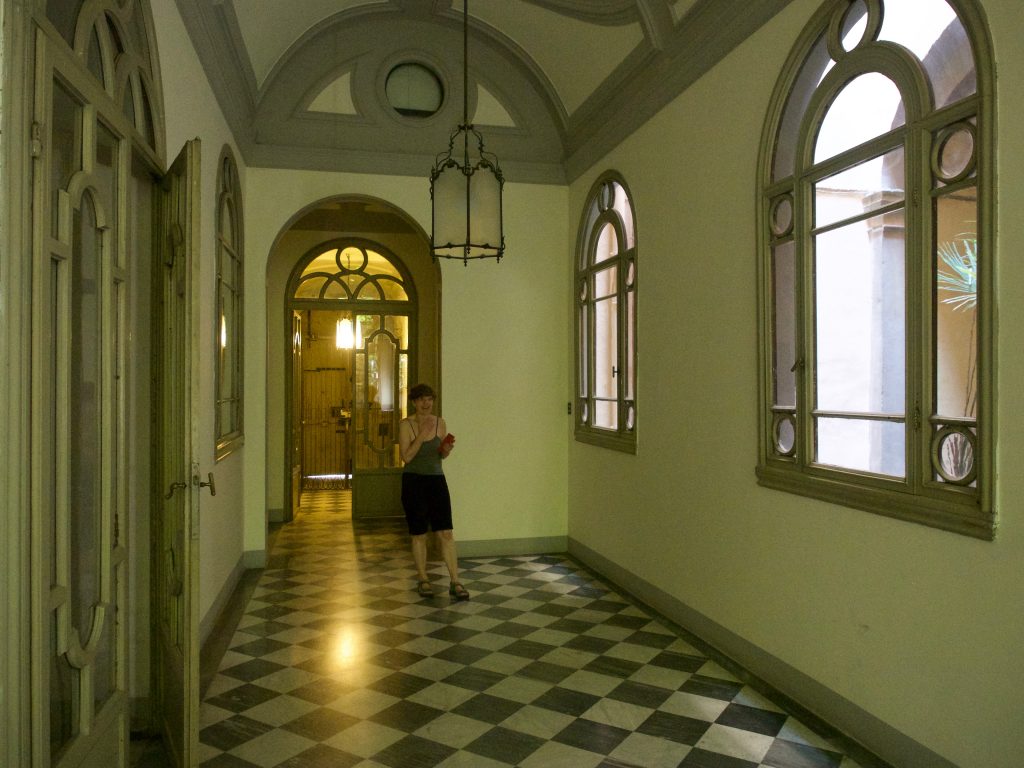
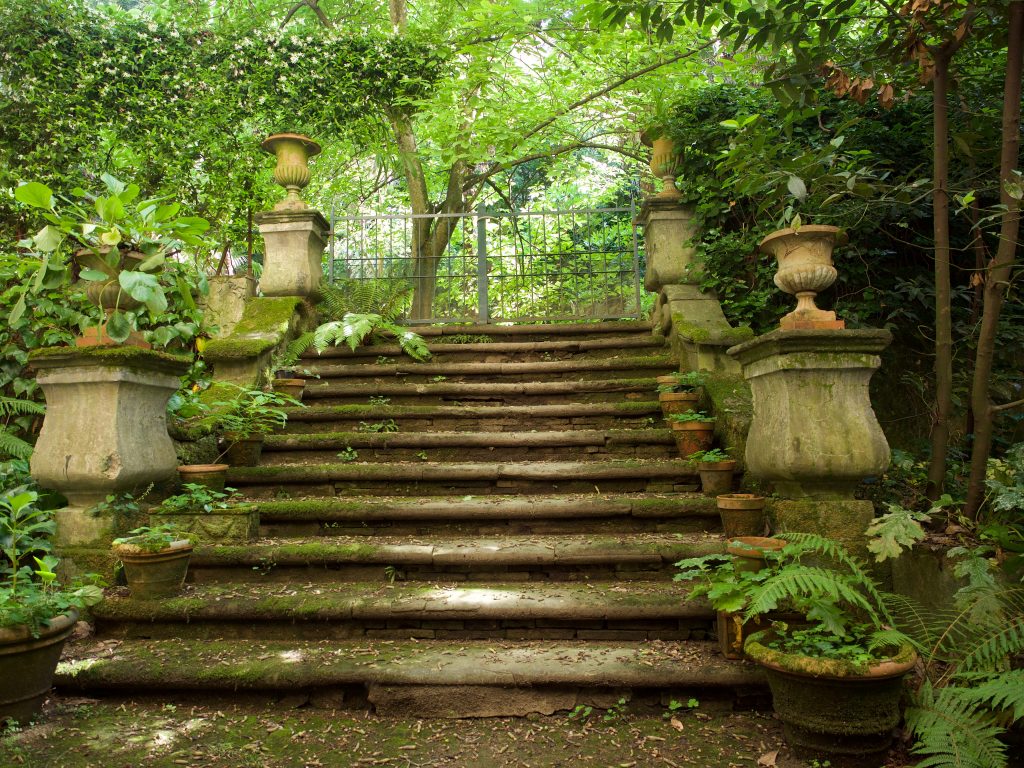
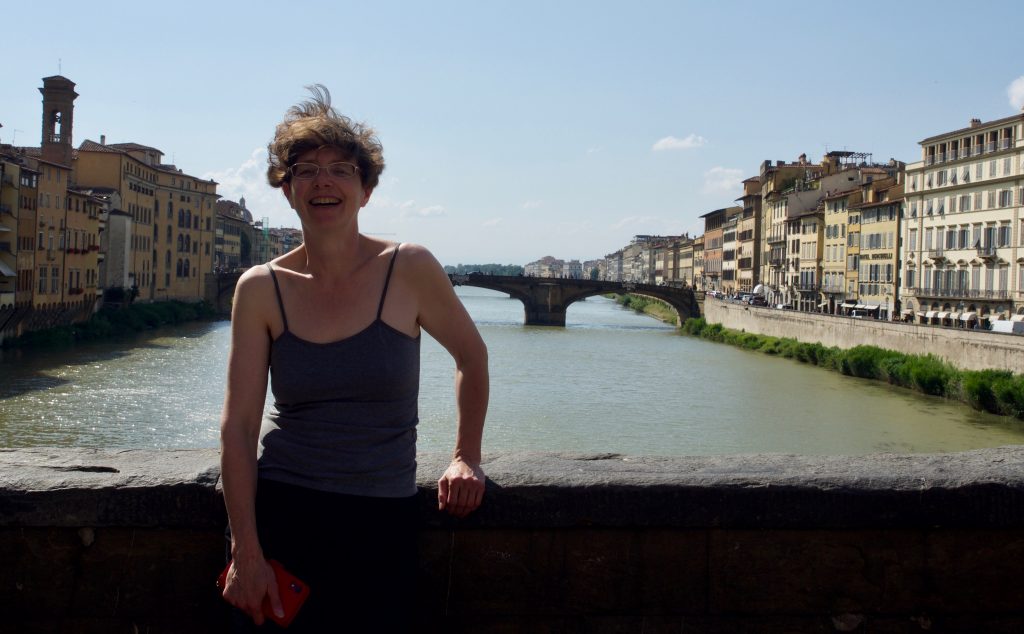
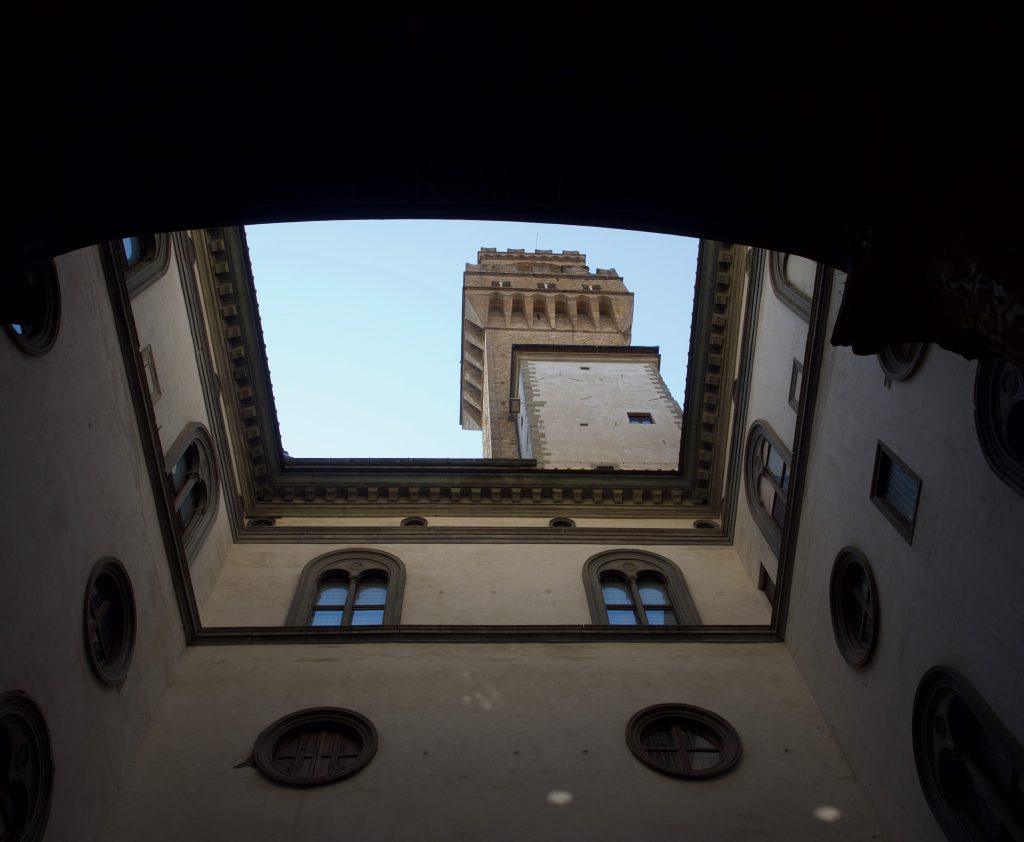
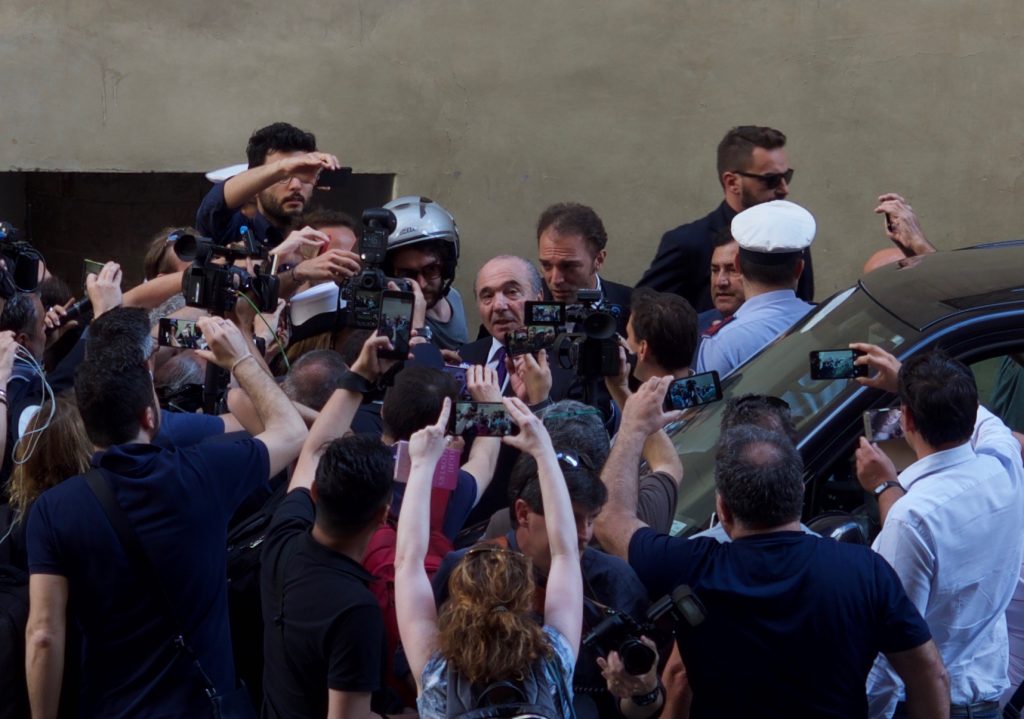
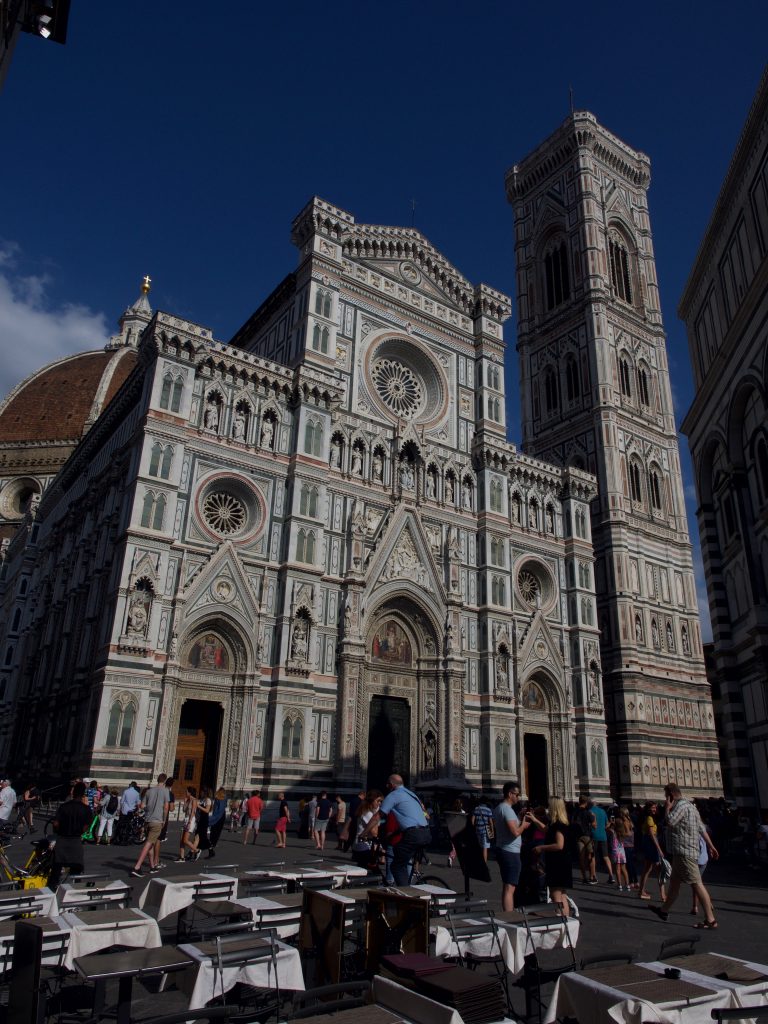
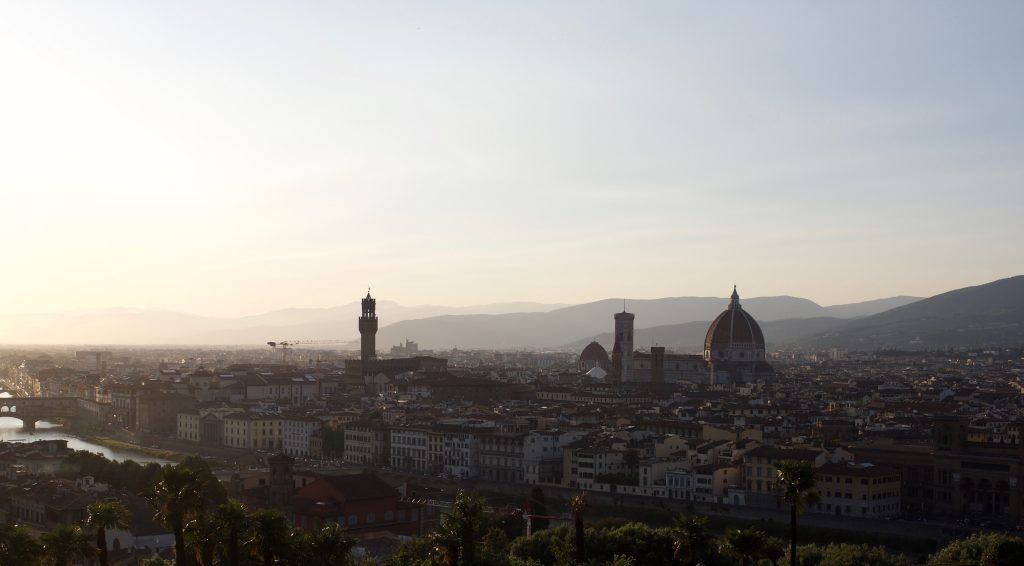
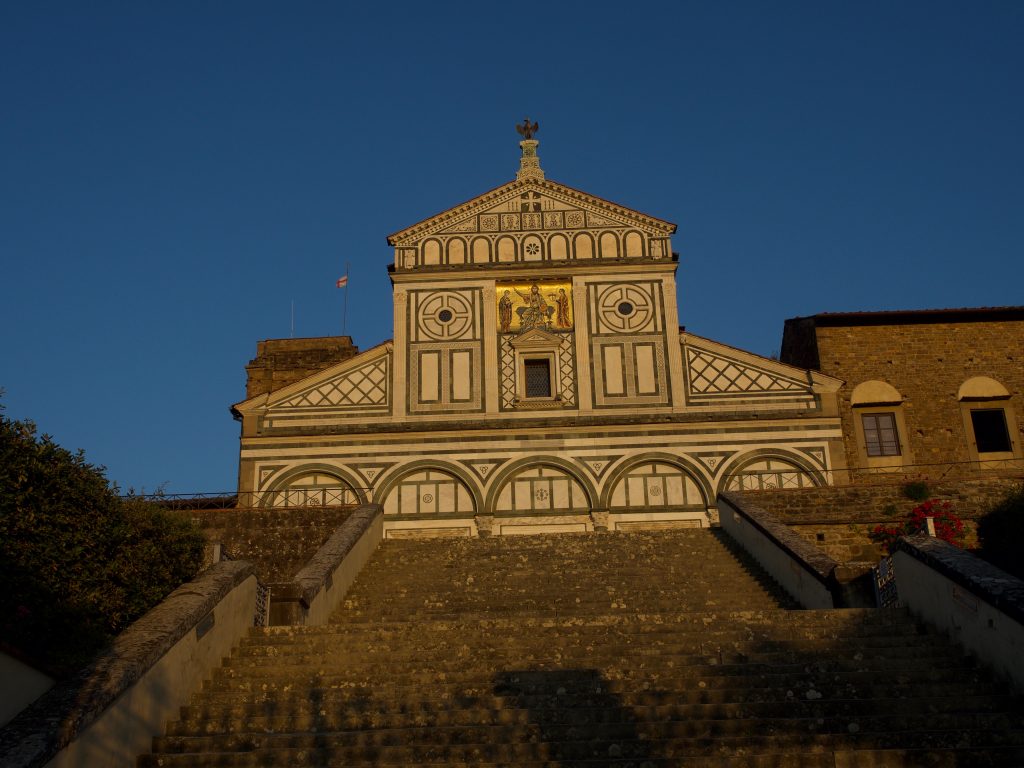
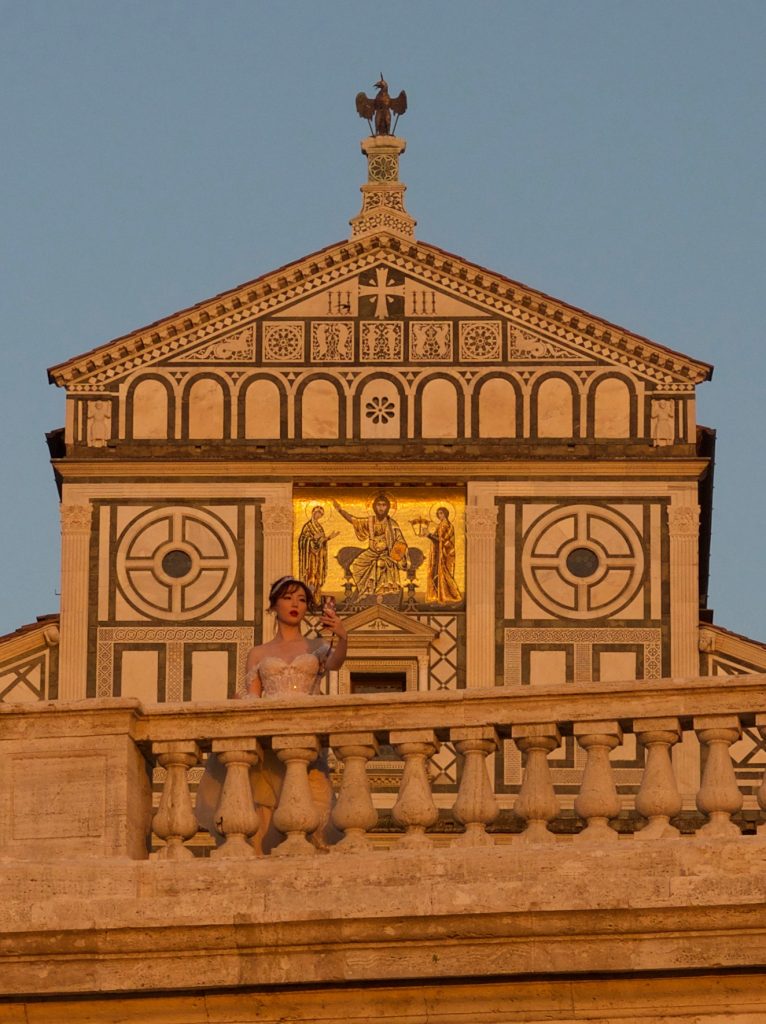
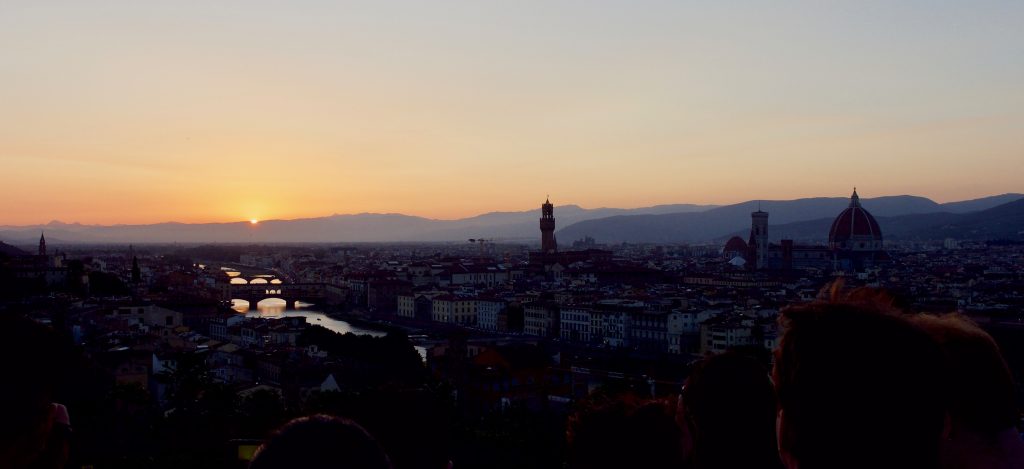
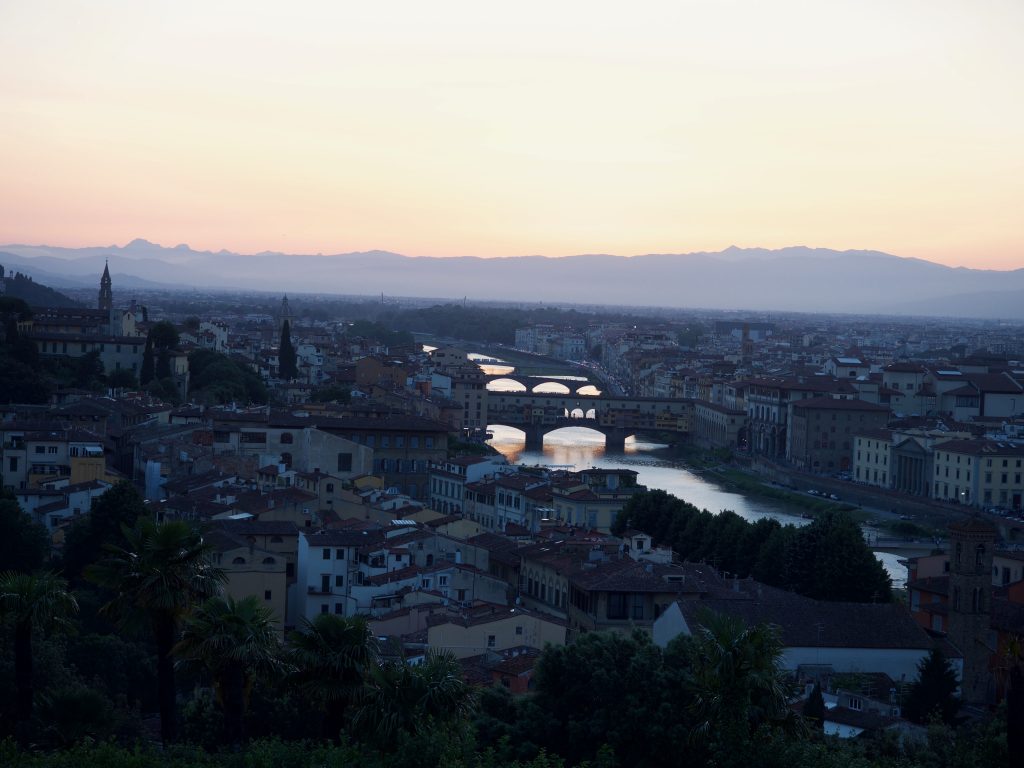
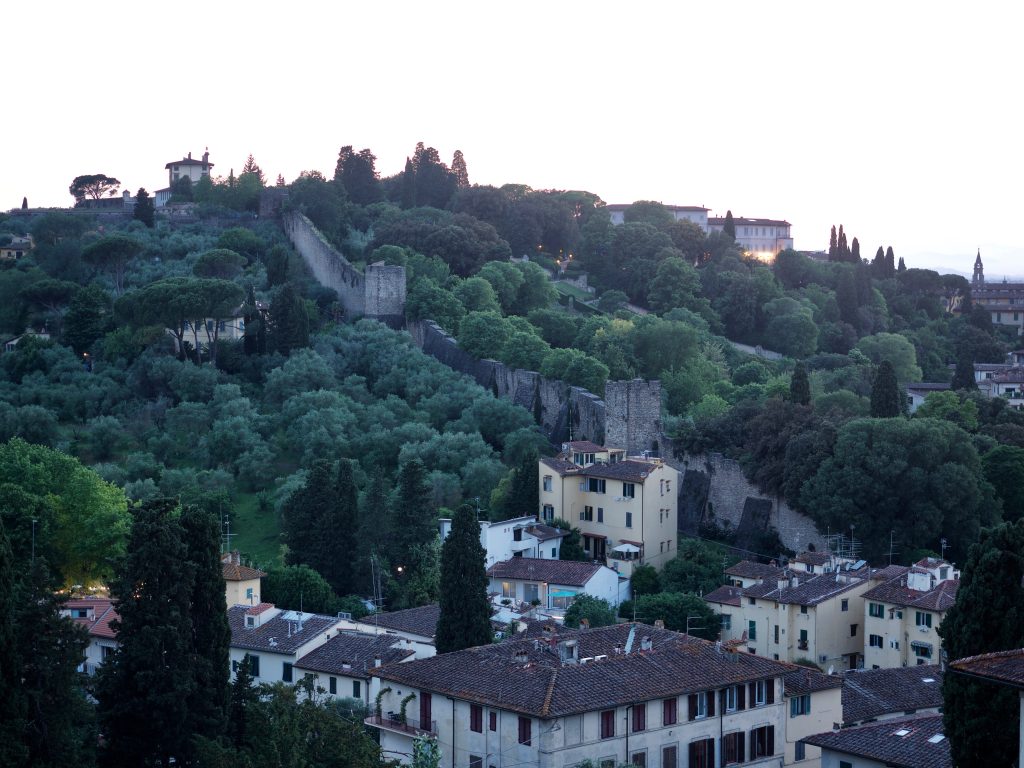
Sadly, I didn‘t sleep quite enough (Mark did ok, thankfully), but at this point, I think it‘s less menopause than excitement. I just can‘t sleep with all these ideas and things to do in Rome and Florence running through my head. So I thought and wrote and played some spider solitaire in the wee hours of the morning, and then finally got up around 7. We got ourselves packed up and said goodbye to our lovely room—it was perfect in terms of a location, and we were really happy, even though we DID have to shower sitting down because the contraption to hold the shower head didn’t work. Some things you just take as they are. I am glad that we ARE going to be back in Rome at the end of our time in Italy and will have a bit more leeway to explore it a little more.
We took the metro for the first time to get to the Tiburtina train / bus station, and since it was only a little after 8 am when we left, it wasn‘t that crowded yet, and we got there without a hitch. First time we had to use public transportation, since everything was so close by we had been walking everywhere. We were early for our bus and just hung out at the bus station with some coffee and pastries until our Flixbus to Florence arrived. It takes 3 hours, but for E 9.99 each way, that was pretty cool. The fast trains get you there in 1.5 hours, but they are much pricier, and we actually DID get to see the gorgeous landscapes of the northern Campagna, Umbria, and then Tuscany, looking up the hills at little towns, fortifications, and the occasional Roman thing as we drove by poppies blooming in vineyards and wheat fields and by the occasional sandstone or even marble quarry.
The bus arrived early at the bus station near the outskirts (Villa Costanza) and we maneuvered the tram fairly well, although it took us a while to figure out what the actual name of our station was, since the Tram station confusingly does not share the name of the train station Santa Maria Novella where we were supposed to get out (Allemani is the relevant Tram stop). The rest of our way to the apartment was a long long walk (a bus would have been only marginally faster, but as is typical for us, we were too cheap to get a taxi). This gave us a first glimpse of the city, but coming from a very traffic-heavy area at the train station and then walking along bumpy sidewalks with heavy luggage made us not very appreciative—Mark probably even less so than me, because he kept pulling the suitcase, waving aside my offers to take a turn. I was especially annoyed with the cars everywhere, having gotten the impression that more of Florence was low traffic/pedestrian than it is. Even the long walk along the Arno from the modern bridge the Ponte Amerigo Vespucci to the Ponte Santa Trinita, with the other bridges in the background did not cheer us up. But then we walked through the via de Bardi and I was already excited, because that is where Eliot imagines Romola to live (Chapter 5 of Romola), and I was on familiar ground. But we were pretty wiped out by the time we got to 119 via San Niccolò, where our apartment is. We had a bit of a hard time communication via the HomeAway app with the apartment hosts, because there was always such a time lag between our questions and their answers, but eventually, Pamela, who is probably the woman who cleans the apartment (and who in retrospect is probably the owner’s housekeeper as well), came to let us in and give us our keys.
I have to say that the apartment blows me away, even though it is the opposite of a „room with a view“ since its only tiny window looks out into a cavernous courtyard from underneath a sort of loggia with groin vaults overhead and columns supporting it before you even get to the open sky. It’s also a bit of damp. We could be very upset about this, like Lucy Honeychurch and Charlotte Bartlett in A Room with a View. But what we have amply makes up for it: a teeny apartment off a 16th-century courtyard in a building that used to be a minor Florentine palace, undoubtedly depressing in the winter but in the heat of the summer lovely and cool—and dark when it gets light outside around 4 am, since we are nearing midsummer. There are brick arches everywhere and a wooden ceiling with crossbeams. Behind the house, there is a wild little unused back yard with very old steps to nowhere. (It turned out to be basically abut on the bottom end of the Giardino Bardini, the gardens above the Palazzo Bardini-Mozzi, which we visited the following week.) In the apartment, brand new appliances including an induction oven, a half-size dishwasher, and wifi—incongruous but convenient. Every time we walk out, I cannot believe that we step out into a courtyard with columns and groin vaults above our door. I am sure some tourists find the set-up too small or too „run down,“ with the courtyard clearly having some dampness to it and with a few hiccups (I can’t make the espresso machine steam my milk! So our main frustration was not finding some sort of guide or overview with basic instructions for various appliances and oddities like light switches in strange locations. But otherwise, we were ecstatic to be in a historic building. I unpacked and started some laundry, and then we set out on our first exploratory peek at Florence.
We‘ll go over all this ground again multiple times, but our first walk took us out of this area (San Niccolò) across the Ponte Vecchio with its little shops that used to be homes for female hermits. This is a total tourist magnet and was just teeming with many hundreds of the tens of thousands of tourists that come to see Florence in June. On the other side, we walked directly to the Palazzo Vecchio, and took in the space for the first time—the unusual tower, off center and too far up front along the line of crenellations, which I had read so much about. The huge outside piazza with too many statues to focus on, but of course especially the copies of the David, the Hercules and Cacus (which may be the original still, since nobody likes it) and the bronze Perseus by Cellini in the triangle formation that John Shearman writes about. We have to go back and look again, of course, but for now, we went into the Michelozzo courtyard (I am pretty sure the crazy ornamented columns were not his fault) and then ran into some tremendous excitement that we couldn‘t understand.
A huge throng of reporters and photographers started to follow an older man with police escort from the streets into the palazzo. Mark took pictures, of course, but we had not the faintest idea what we were seeing, and asking about us didn‘t get us much farther (only in the evening, with quite a bit of googling, did I finally figure it out and the excitement made SOME sense, given the Italian soccer fandom: the famous soccer club La Fiorentina just changed owners, and an Italian-American billionaire named Rocco Commisso bought it. We apparently witnessed the moment right after the news broke; why that happened at the Palazzo Vecchio, I am not sure (it IS the active town hall, though, so I assume he met with city officials), but the Italians were clearly super excited, while tourists like us were just baffled about a celebrity that didn‘t mean anything to us. 🙂
While we were in this area, I got us reservations to the Uffizi for Saturday morning, and then we walked to Duomo and tried to find out what we had to do about reservations for the Duomo climb, but that can‘t happen until tomorrow. Instead, we walked around the piazza where the baptistery and cathedral are being besieged by tourists, and I had to think about Eliot‘s complaint about the ugly unfinished facade of the Cathedral, which is of course no longer unfinished, but thus also a late 19th-century add-on, stylistically sort-of matched to the campanile with the white, green and red marble, which I can appreciate but in a way, I would have liked to see the non-facade that the Duomo had for most of its life and that people always complained about. Thankfully, a whole bunch of other churches we are seeing are without their facades, so I can still imagine what that looks like.
We then walked to the Piazza della Republicca, a square has a huge late 19th-century neoclassical addition on its West end with coffered barrel vaults that is at least stylistically aligned with the rest of the architecture, and which, to Mark‘s excitement, has an apple store in its left wing. But what I was thinking about, of course, was that the piazza used to be the Mercato Vecchio (hugely important in Romola as a prime early Renaissance „everyday site“ for local color) and even more so, the Roman founding point of Florence, the umbilicus or mundus where the two major EW/NS roads (the cardo and the decumanus) meet and where the Roman-era forum was located. Since the Roman-era origins of Florence have all but disappeared underneath the medieval, Renaissance and then Baroque layers of downtown Florence (outside of the archeological museums and excavation areas and some stuff on the outskirts) this was really interesting to think about.
We then headed back toward the river through a fairly medieval, crooked and windy portion of the downtown, and then made our way back to our own quarter and the nearby supermarket (Conad), which has the expensive deli stuff up front but normally priced things in the back. We took home food for a couple of dinners and breakfasts, and while I put things away and made us a salad, Mark dealt with the slightly damp laundry from the washer+dryer combo (those things really do not do well at drying). We had a lovely salad with a whole-wheat croissant and some cheese and prosciutto, and while I managed to make myself a coffee in the fancy Mio coffee maker, I found out that I couldn’t get the steam to work for my milk and was a little disappointed.
It was almost 8 pm now and we headed back out, following a tip from Rebecca to go up to the piazzale Michelangelo on top of the hill behind our street. Less than 10 minutes from where we are, it is a plaza from which throngs of tourists watch the sunset every night. I didn’t like the crowds, but the view of Florence across the river from up high was spectacular. We walked by San Miniato al Monte, which is a beautiful Romanesque church with the classic black and white decor, like the baptistery, and the Italo-Byzantine image above the door glinted as the low sun hit it. A group was taking photos in Renaissance costumes, while a bride and groom were photographed by their photographer (onlookers pointed out that this was probably a “fake wedding”—apparently Asian tourists stage western weddings in “unforgettable locations” like this and get them professionally photographed, even if they are already married?) Mark later caught a great shot of the bride taking a selfie with San Miniato in the background. Selfies all over! We walked a little further along the road toward the Boboli gardens, but we’ll get more walks there later, so it was just to enjoy the gorgeous views. Eventually, we joined the crowds at the piazzale again and dutifully took sunset photos along with everyone else. The crowds still annoy the crap out of me, and I cannot wait for some early morning times where things are just a little quieter. There will be little of that, I know.
We were home by about 10:30 and spent a couple of hours catching up on blogs and photographs. So much to process all the time. I don’t even know when to do all the thinking I need to do about the difference between spaces today and spaces that 19th-century women travelers would have experienced. So I need to start pacing myself a little more. I am glad we have 7 days here. But there is so much to see and to do. They will be crammed full!